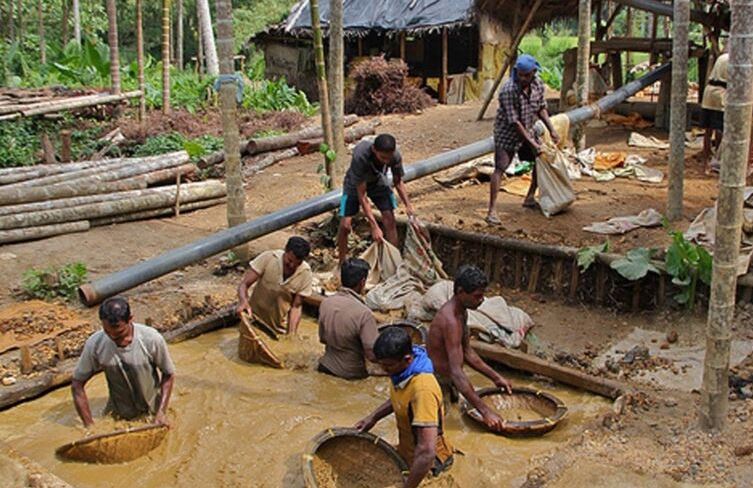
Sri Lanka has been known as the “Jewel Box of the Indian Ocean” for its abundance of precious and semi-precious gems. Gemstones have been mined in Sri Lanka for over 2,000 years, and the country is famous for producing some of the world’s finest sapphires, rubies, and other gemstones.
Gem mining in Sri Lanka is a traditional and important industry that provides livelihoods for many people, particularly in rural areas. The gemstones are found in riverbeds and alluvial deposits, as well as in mines located in the central highlands of the island.
The mining process in Sri Lanka is often carried out by small-scale artisanal miners who use simple tools and techniques. This type of mining is called “ratnapura mining,” after the town of Ratnapura in the Sabaragamuwa Province, which is known for its gem deposits. These miners use picks, shovels, and sieves to extract gemstones from riverbeds and alluvial deposits. Once the gems are extracted, they are cleaned and sorted by size, color, and quality.
In addition to Ratnapura mining, there are also larger-scale commercial mines in Sri Lanka. These mines use modern machinery and techniques to extract gems from deep underground. The largest gemstone mine in Sri Lanka is the Kahatagaha Graphite Lanka Ltd. mine, which produces high-quality vein graphite.
Sri Lanka’s gemstones are highly prized for their quality and unique properties. The most famous gemstone from Sri Lanka is the Ceylon sapphire, which is known for its vivid blue color and exceptional clarity. Other popular Sri Lankan gemstones include the Padparadscha sapphire, which is a rare pink-orange sapphire, and the alexandrite, which changes color depending on the lighting.
The Sri Lankan government has taken steps to regulate and protect the gem mining industry in the country. The National Gem and Jewelry Authority (NGJA) was established in 1972 to promote and develop the industry and to ensure fair prices for gemstones. The NGJA also regulates the export of gemstones and requires that all gemstones be certified for quality and authenticity.
Despite these efforts, there are still concerns about the sustainability and ethical practices of the gem mining industry in Sri Lanka. Some mines are known to use child labor and to engage in environmental degradation. However, there are also efforts to promote sustainable and responsible gem mining practices, such as the Fair Trade Gemstones project, which aims to provide fair wages and safe working conditions for miners.
In conclusion, gem mining is an important industry in Sri Lanka that provides livelihoods for many people and produces some of the world’s finest gemstones. While there are concerns about sustainability and ethics in the industry, efforts are being made to promote responsible and fair practices. Sri Lanka’s gemstones will continue to be treasured and sought after by buyers around the world for their unique beauty and quality.

